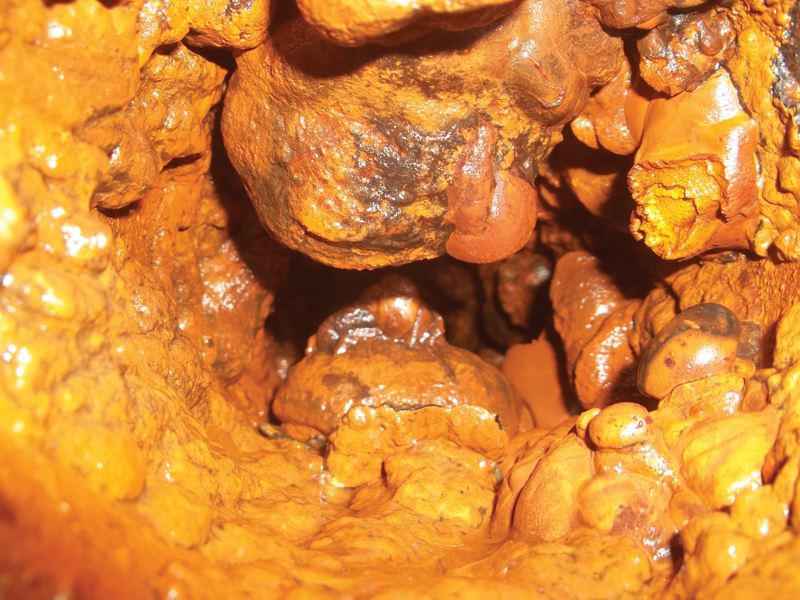As aging water assets reach the end of their lives, leaks, breaks, and decreased hydraulic performance are increasingly evident across Canada. Old metallic pipes are often rife with rust (due to corrosion), sediment, old coatings, and even biological growth that can negatively affect water quality. As pipes become clogged, greater pressures are required to deliver water. Just as a heart works harder to pump blood through clogged arteries, so to do the pumps that provide potable water. When blockages become too constrictive in aging arteries, we have heart attacks. In water main systems, we have main bursts.
One solution for aging pipes is to clean them out and reline them using trenchless technologies. These operations entail digging small surgical pits in the ground to gain access to buried water pipes. Once the pipe is opened and properly cleaned, a new liner can be installed and secured. These liners would be the equivalent of stints installed to open and strengthen a clogged artery. Liners are typically designed to last fifty years, greatly improving water quality and quantity, and substantially lowering maintenance costs, including leakage, main breaks, and pumping costs.
The challenges of pipe cleaning
A whole new set of challenges emerges as we prepare to install pipe liners. Firstly, if a corroded metallic water pipe is cleaned but not coated or lined, it will simply corrode again, often at an accelerated rate, producing foul-tasting, “red”(rusty) water in the process. In other words, while cleaning is necessary, it does not exactly solve the problem. Secondly, if the old pipe is not properly cleaned and prepared prior to lining, the new liner may eventually leak again or even fail prematurely.
It is not enough to clean the pipe—it has to be cleaned properly, and this is no small task. There are many old methods for pipe cleaning, each of which provides strikingly different outcomes. They vary from simply swabbing a pipe using a foam plug to radical intervention using a powered, metal scraper. The outcomes range from nothing more than sediment removal to mechanical removal of corrosion products using brute force, polluting many gallons of treated water in the process.
None of these methods produces a consistent, prepared, bondable surface, and none of the outcomes are quantitatively measured; rather, the municipal official using these technological relics relies on visuals and aesthetics. A judgment call determines what is actually clean. There is seldom, if ever, any quantitative measure of “clean” or “surface preparation,” or “dryness” or “liner bond.” In fact, these terms are not defined anywhere. There is no federal, provincial, or professional standard, nor is there any recognized manual of best practices that provides a substantive, quantitative measure for cleaning old water pipes. Given the challenge of failing infrastructure, there simply must be.
Every pipe liner that is brought into service will see variations in water pressure over its life, from system operating pressures to test pressures and transient surge pressures (also known as water hammer). In addition, these liners will have to stand up under soil and traffic loads, continued corrosion, temperature swings, and variations in water chemistry. In order to keep them leak-free over their design lives and tightly conforming to the old pipe, good cleaning practices need to be standardized with quantitative, measured outcomes. Given the cost of installing these liners and the expected life span (about fifty years), a judgment call is best replaced with a standard.
Establishing a cleaning standard
In order to establish a cleaning standard, there are many assistive sources already in the market. For guidance, we can look to other professional bodies in parallel technical universes. For instance, the National Association of Corrosion Engineers (NACE) is a professional body with expertise in pipeline corrosion. NACE promulgates standards for the cleanliness and protection of metallic substrates (including pipelines) against corrosion prior to coating in many related applications. Similarly, the American Society for Testing and Materials produces standards for the testing of cleanliness and bond.
The adaptation and incorporation of these established practices and standards into a pipe cleaning standard just makes sense. So, what are we waiting for? Government and professional associations need to step forward now to develop and implement a cleaning standard at the dawn of this renewal era. WC
Randy Cooper is a consulting engineer and president of Envirologics Engineering Inc.













